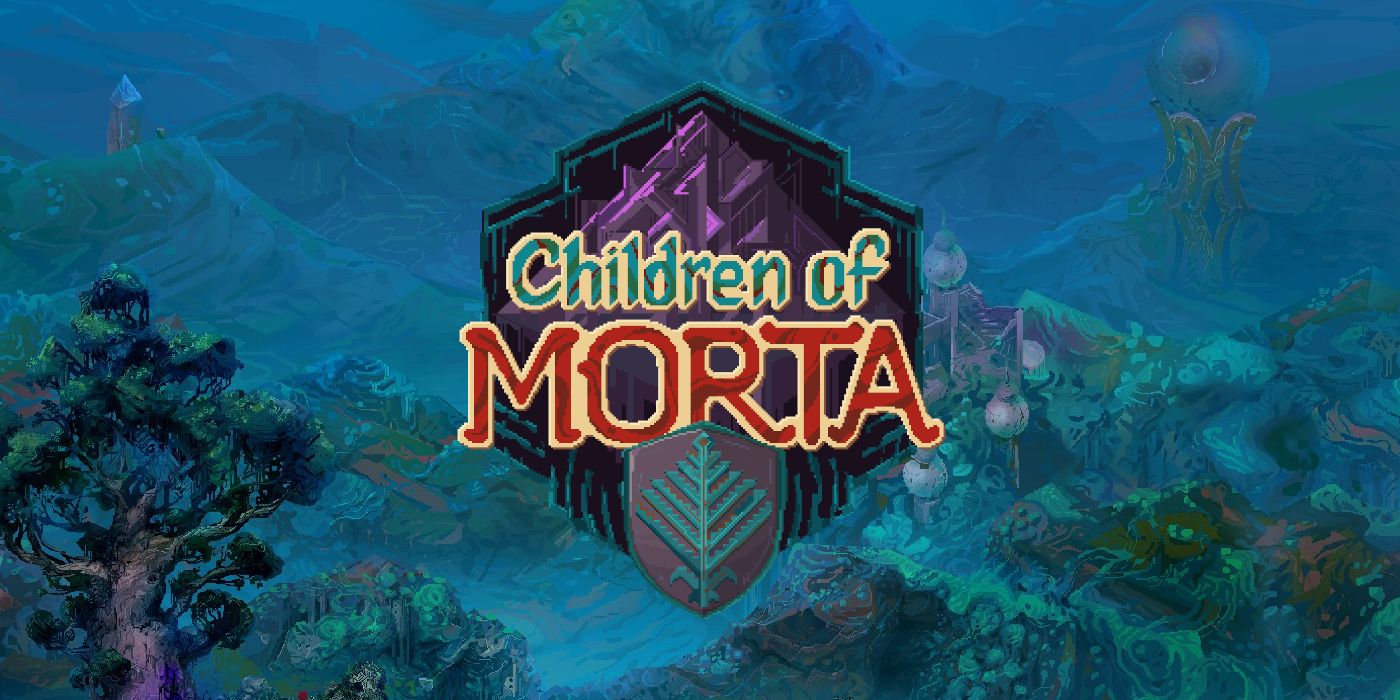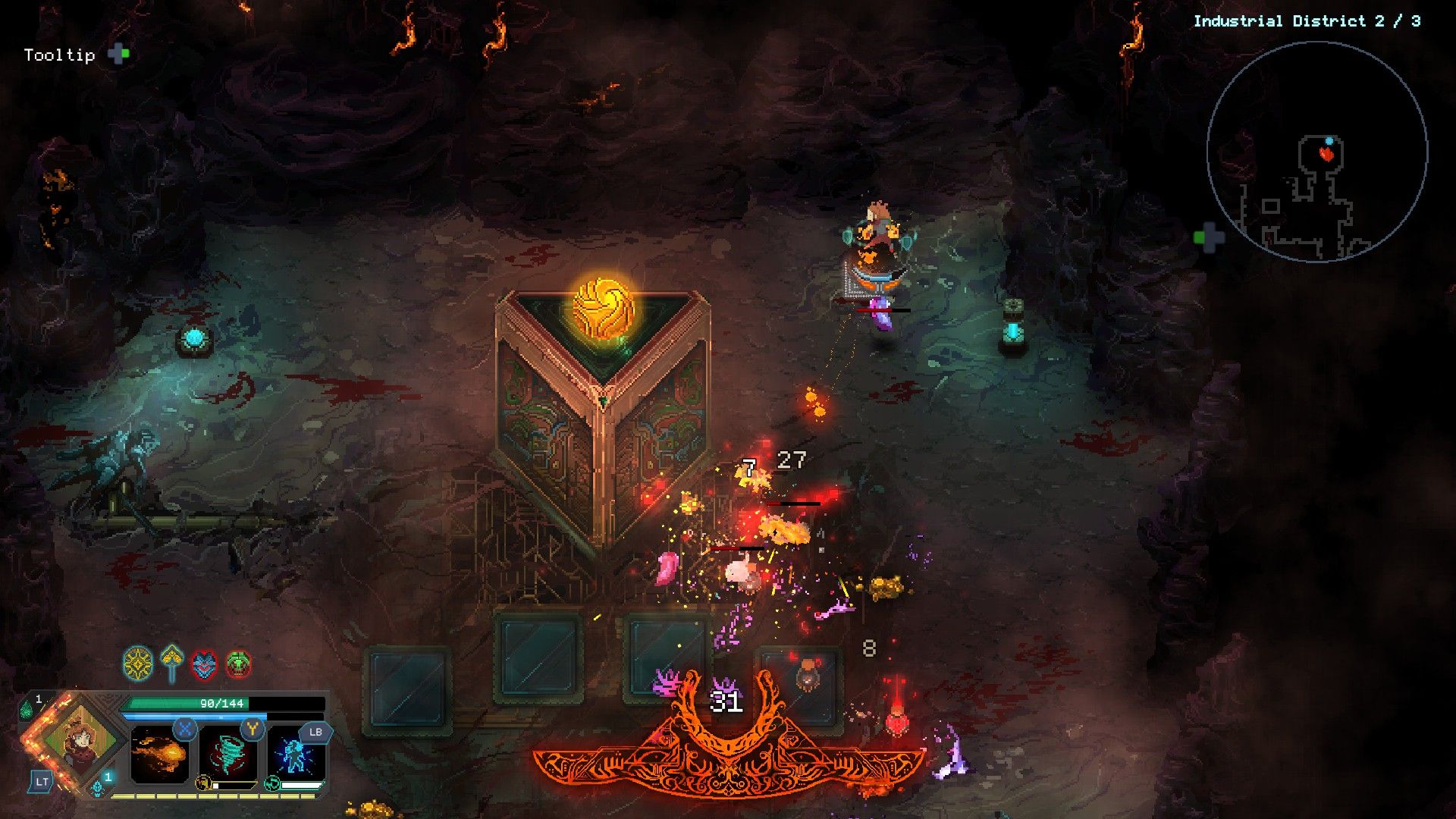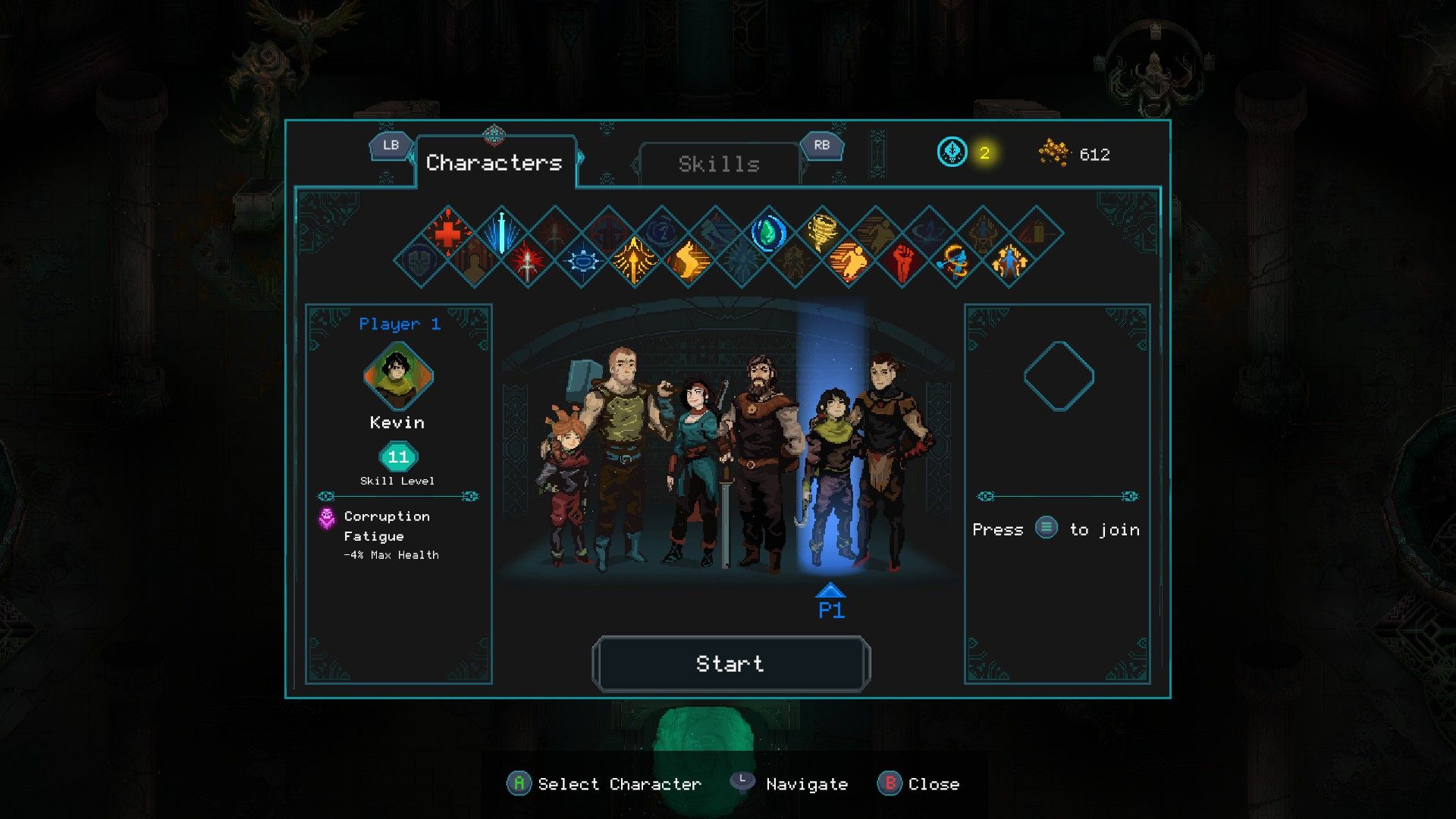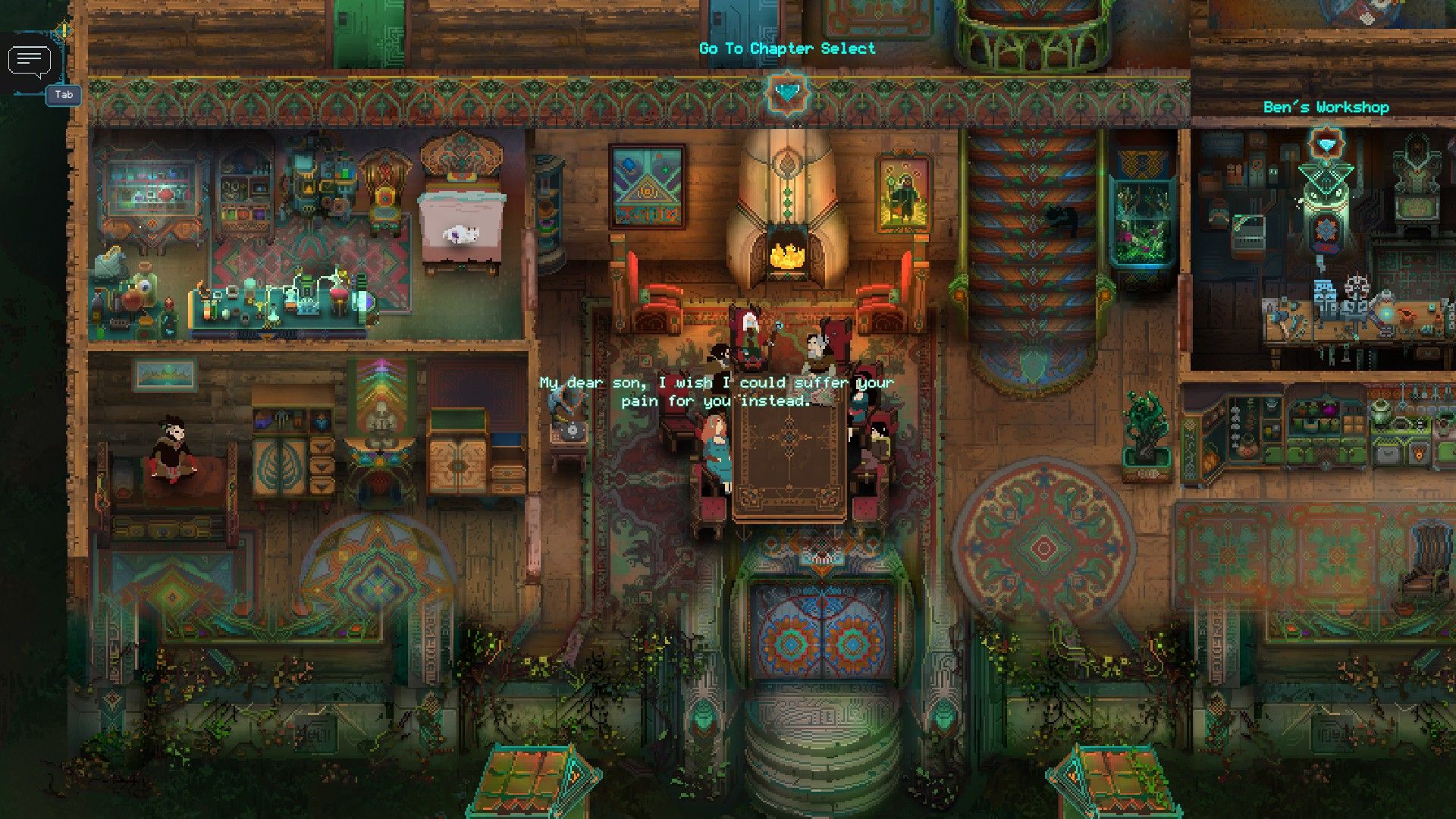Children of Morta will probably get some substantive updates in the coming months, but it currently pales in comparison to other action roguelikes and won’t hold most gamers’ attention for too long.
Crowd-funding and pixel-art-led games go hand in hand. Platforms like Kickstarter have introduced fans to wildly ambitious, gorgeous creations unrelated to publisher interest, and we have a bevvy of modern-day treasures as a result: games like Moon Hunters, Songbringer, Hyper Light Drifter, and Wizard of Legend. The latter is probably the most fit comparison point for the new family tree action roguelike Children of Morta; both will see deployment on the Nintendo Switch, both invoke the rhythm of repeat playthroughs to unlock content, and both are obviously amateur projects by budding developers. Children of Morta is certainly worth a look, but the amount of key mechanics and concepts that the game gets wrong grants it a considerable distance from greatness. Future patches (including a promised online co-op feature) may shrink that distance, but it’s a hesitant recommendation as it is.
The building blocks are there, though. As an action roguelike with a pronounced emphasis on narrative (in itself a rare and worthy ambition), Children of Morta quickly introduces players to the Bergsons, a multi-generational family of protectorate forest-dwellers overlooking their dominion. If you saw where the Bergsons lived you might feel a similar pang of ownership, as the cliffside manor on this otherworldly terrain presents a spectacular view. Sometimes the game looks eerie and uncanny but other times it feels cozy, intimate, and familiar, like cutscenes where the Bergsons eat dinner together around the table. In an understated but inspired decision, the manor itself functions as a menu screen in between forays into danger, where the uncle’s workshop lets you upgrade family member abilities, and Grandma Margaret’s library adjusts drop rates and other affairs. You can also just watch family members pacing in their rooms and gain entry to their thoughts, which usually amounts to a few different lines at different points in the game.
So far, so good, but it should be mentioned here that Children of Morta goes the “one-omniscient-narrator-and-no-other-voice-actors-at-all” route, a strained creative choice that does get in the way of immersion in the plot tale. The narrator himself is decent, but also a little too precious and predictable, sounding like anyone you might hear reading the title card text from an old fantasy film. The intention seems to be for this narrative to be presented as a storybook, but it’s something we’ve seen a lot in film and video games before, and feels too cliché for the game’s clear attempt at innovation in the genre. The family members are all recognizable archetypes — all-knowing grandmother, handyman uncle, hot-headed younger sibling, etc. — but the brevity of the game prevents significant investment in any one of them, one point among many which compromises the game's thesis.
The gameplay is definitely exciting at first blush. At various points throughout the initial stages, you’ll gain access to additional Bergsons to choose from at the start of a dungeon run. The pater familias John carries a sword and shield and, like his kinfolk, additional abilities will emerge through XP upgrades, where each button on the controller will eventually be used in combat (XP points and ability unlocks are always permanent). He can swing a sword, bring up his shield to block damage, and call down a rain of ghostly swords. Conversely, Linda is an archer, with her abilities requiring safe distance from any opponents. The youngest daughter Lucy is a diminutive spellcaster, shooting fireballs and calling up cyclones to tangle up enemies.
Occasionally, family members get afflicted with slight debuffs which will push you to use others at certain times, though none of this ever seemed to work as expected (90% of the time, despite any in-game alerts stating otherwise, all family members were functioning perfectly at the start of a run). Additionally, the different family member classes seem to beg for co-op gameplay, an easy enough option for friends on the couch. Otherwise, online co-op is promised to release soon, and may very well improve direct elements of the basic game as a result. The main tank-oriented family member unlocked at approximately 1/3rd into the game is more or less unplayable alone, which hints at this co-op intention, but will clearly frustrate people who want to play Children of Morta on their own. Playing on controller you’ll also realize that Linda is virtually unusable, since the right analog stick coordinates the direction of her shots, but one of her abilities can’t be activated effectively unless you bring out the mouse and keyboard. Aside from this character, though, the game feels like it was built for a controller.
Still, that detail is one of many hinting at the semi-finished state of the game. Regardless of the years spent in development, Children of Morta is very rough around the edges in a numerous ways. The few enemies that pop up in the different biomes are simplistic and unsatisfying to fight, with occasional elites revealed that have one or two additions to their move-sets. In a diverse game like Risk of Rain, these mostly mindless mobs would be easy enough to forgive, but Children of Morta has no comparable item and upgrade variety, a key component of action roguelikes that is interrupted on two separate fronts. First of all, most upgrades you’ll run into are completely dull, adding a tiny increase to critical hit or dodge percentage or something of the like, slight boosts to aspects that have little to do with combat feel. Secondly, each run consists of a single biome and abruptly ends, as players are yanked back to the Bergson home after completing a given area’s one to four stages, so there’s no real overpowered or underpowered potential in any given playthrough. For an action roguelike game this seems completely nonsensical, and makes each run feel inconsequential and bland.
Randomization within these biomes is minimal, too, with a very small assortment of chance rooms subject to the RNG. Yes, there are occasional story-focused rooms which will appear the first few times you attempt a level, but even these usually have no lasting affect on the way you play or experience the game; an early encounter sees the Bergsons taking in a baby wolf, which promises some actual change to how the game is played. Maybe the wolf becomes a familiar, or unlocks a special ability back at the home? Sadly, similar to other encounters, this wolf has no effect on the game whatsoever, aside from a new sprite lazing around the house that cannot be interacted with at all.
The expectations and disappointments persist throughout, making it somewhat clear that corners (and content) was cut prior to release. Other details, like characters who have died showing up in later cutscenes or on-screen text misread by the narrator, only hammer that point home further. Early levels imply real engagement, immersion, and randomization potential, but running through the game will only take most players ten hours or less, and they will find that they’ve been repeating the same actions over and over with little in the way of meaningful surprises between levels. Even most bosses have minimal attacks, and the majority may be bested on a first attempt, which seems outlandish for a game which expects multiple playthroughs and doesn’t present any special drops or benefits from boss kills — which, admittedly, would be pointless, since you're always sent back to the manor after they’ve been defeated.
Years ago, Children of Morta might have been seen as an ambitious and mostly acceptable action roguelike. These days, with so many other viable options available, the content of the game seems withered and its attention misguided, with an ultimately clumsy but well-meaning narrative that meanders and stumbles throughout. The graphics never falter, though, making the whole of it feel like a very strong proof-of-concept that stumbled on its way to final release. As with most things, Children of Morta will probably get some substantive updates in the coming months, but it currently pales in comparison to other action roguelikes and won’t hold most gamers’ attention for too long.
Children of Morta releases Tuesday on PC, with a Nintendo Switch release planned for October. A digital copy was provided to Screen Rant for purposes of review.




